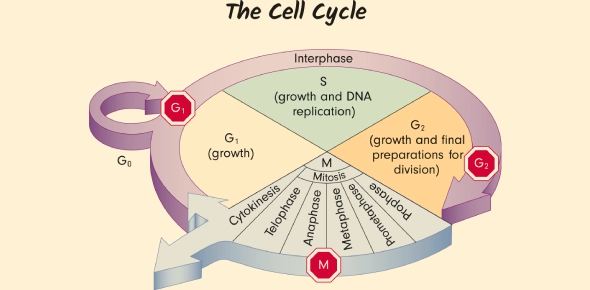What Is Cell Cycle and Cell Division Phases, Differences & Examples? Explore Its Types, Uses & More
Lesson Overview
Have you ever wondered how a small scrape on your skin heals so smoothly? This healing is possible due to the cell cycle and cell division, processes working quietly within your cells. In this lesson, you'll explore these essential biological mechanisms clearly, solving your doubts through simplified explanations and examples.
What Is the Cell Cycle, and Why Is It Important?
The cell cycle is a series of stages a cell goes through as it grows and divides. It's fundamental to life, enabling organisms to develop, heal injuries, and reproduce. Let's examine these stages one by one to simplify this important concept.
Interphase: How Do Cells Prepare for Division?
Interphase is not just a "waiting" phase; it's an active time where cells prepare carefully for division. It consists of three main phases:
- G₁ Phase: The cell grows and carries out normal functions. It accumulates the resources needed for DNA replication.
- S Phase (DNA Synthesis): DNA is replicated, ensuring each daughter cell receives a complete genetic blueprint.
- G₂ Phase: The cell checks for DNA replication errors and prepares the cellular machinery necessary for division.
Mitotic Phase: What Happens During Cell Division?
After interphase, the cell enters the mitotic phase, dividing into two genetically identical daughter cells through mitosis and cytokinesis. Mitosis ensures growth and repair, maintaining genetic consistency.
Take This Quiz
What Are the Phases of Mitosis?
Mitosis consists of four clear phases. Let's simplify them with easy-to-remember clues:
- Prophase: Chromosomes condense and become visible. The nuclear envelope breaks down, and spindle fibers form.
- Metaphase: Chromosomes align along the center (equator) of the cell.
- Anaphase: Sister chromatids separate and move toward opposite cell poles.
- Telophase: New nuclear membranes form around the separated chromosomes, completing the division of the nucleus.
After mitosis, cytokinesis splits the cytoplasm, fully separating the two new cells.
Why Do Cells Need Meiosis?
Unlike mitosis, meiosis is necessary for sexual reproduction. It reduces the chromosome number by half to form gametes (sperm and eggs), ensuring genetic diversity.
Meiosis I and Meiosis II: How Do They Differ?
Meiosis involves two rounds of division:
- Meiosis I (Reductional Division): Homologous chromosomes pair and separate, reducing chromosome number by half and increasing genetic diversity through crossing over.
- Meiosis II (Equational Division): Sister chromatids separate (similar to mitosis), producing four genetically distinct haploid cells.
What Controls the Cell Cycle?
Cells do not divide randomly. The cell cycle is tightly controlled by checkpoints, ensuring cells only divide when conditions are right.
What Are Cell Cycle Checkpoints?
Checkpoints act like quality-control inspectors:
- G₁ Checkpoint: Checks cell size, nutrients, and DNA damage before DNA synthesis.
- G₂ Checkpoint: Ensures DNA replication has occurred correctly without damage.
- M Checkpoint: Verifies chromosomes are correctly attached to spindle fibers for proper separation.
How Does the p53 Protein Regulate Cell Division?
The protein p53 acts at the G₁ checkpoint, stopping cells with damaged DNA from dividing. It allows for DNA repair or initiates programmed cell death (apoptosis), preventing potential mutations that could lead to cancer.
Why Are Mitosis and Meiosis Significant for Life?
Mitosis and meiosis serve different but equally critical purposes:
| Feature | Mitosis | Meiosis |
| Purpose | Growth, repair, asexual reproduction | Sexual reproduction |
| Number of Divisions | One | Two |
| Daughter Cells Produced | Two identical diploid cells | Four unique haploid cells |
| Chromosome Number | Maintained (diploid) | Halved (haploid) |
| Genetic Variation | No new variation | Creates genetic variation |
How to Avoid Common Mistakes About the Cell Cycle?
Let's address common student misunderstandings:
- DNA Replication Timing: Remember, DNA replicates in the S phase of interphase, not during mitosis or meiosis.
- Chromosome Numbers: Meiosis halves the chromosome number, while mitosis keeps it the same.
Crossing Over Confusion: Crossing over only occurs in meiosis, not mitosis. It's a key difference.
Take This Quiz
Rate this lesson:
 Back to top
Back to top
(82).jpg)
